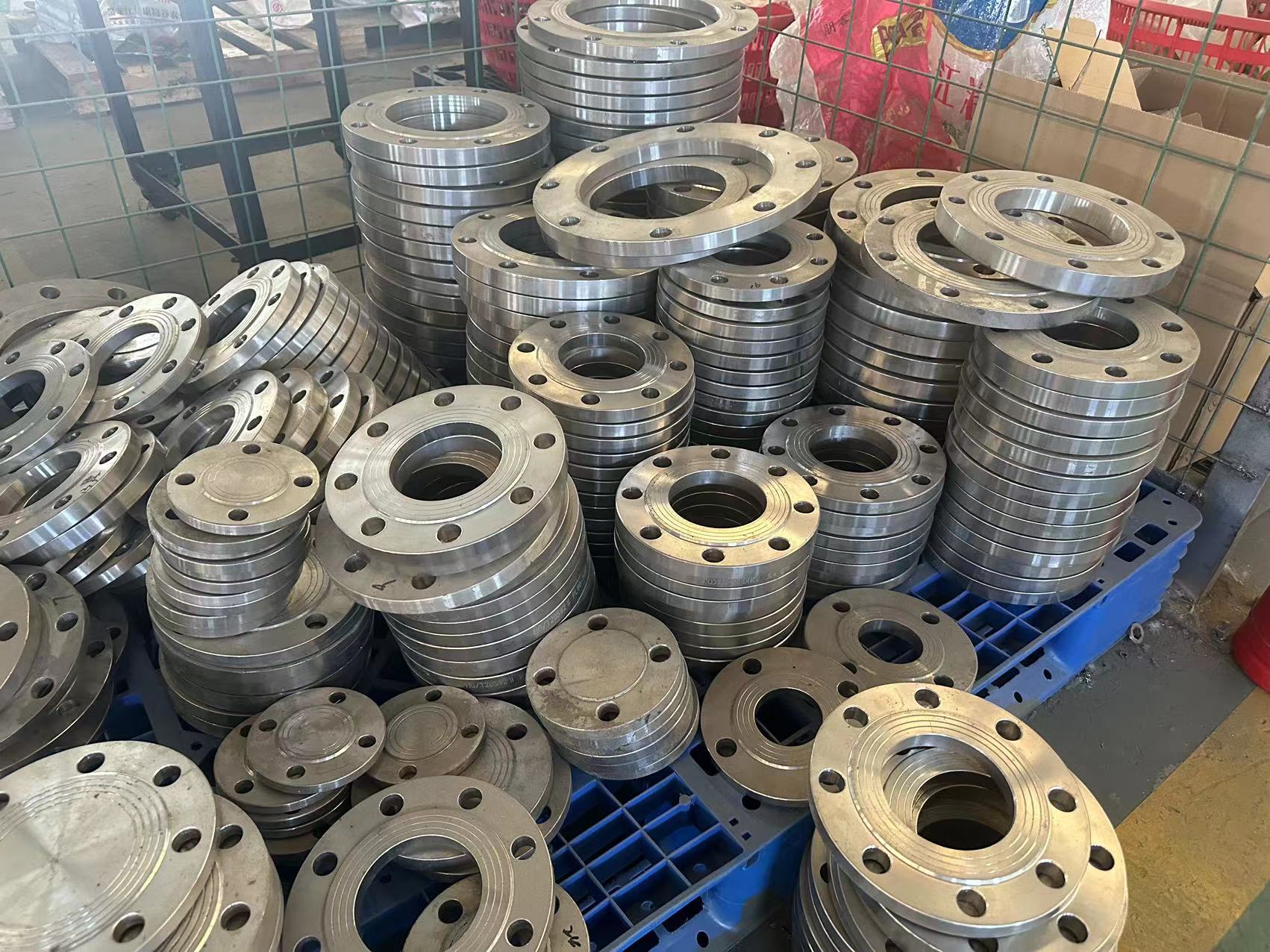A company’s dehydrogenation reactor experienced a leak at the takeover flange during operation. The flange leak occurred at the junction of the variable-diameter section and the straight section. The flange is a mechanically processed shaped product made of solid-solution annealed stainless steel forgings. The flange is installed at the inlet of the dehydrogenation reactor, with a working pressure of 0.13 MPa, a working temperature of 608°C, and a working medium consisting of a mixture of hydrogen (about 50% content), isobutane, propane, and a small amount of hydrogen sulfide gas, with external piping wrapped in rock wool insulation.
1. Chemical Composition Analysis of Cracked Flange:
The analysis results show that the chemical composition of the flange and welding materials meets the relevant standards. Brinell hardness tests were conducted on the outer surface of the flange neck and the sealing surface, and the Brinell hardness values comply with the JB4728-2000 standard requirements. Despite the qualified chemical composition, hardness tests, and proper installation of the pipeline, the flange cracked during the pressure test, indicating that the defect is related to the internal structure or other unknown factors of the flange.
2. Analysis of Crack Characteristics:
2.1 Surface Crack Morphology:
Upon cutting the leaking flange from the pipeline, a comprehensive macroscopic inspection revealed cracks on the inner surface of the flange, up to 3mm in length and 0.5mm in width, accompanied by rust stains near the cracks. Numerous cracks were also found on the inner surface of the flange bolt holes, and non-metallic inclusions were discovered on the sealing surface and other locations. Some non-metallic inclusions caused small pits on the sealing surface, with a maximum depth of 2.0mm and a minimum of 0.8mm, and visible tiny cracks along the edges.
Macroscopic inspection of other austenitic stainless steel flanges from the same manufacturer and batch showed varying degrees of defects, with some flanges having visible cracks on their outer surfaces. This further confirmed the association between flange leakage and flange-related factors.
2.2 Cross-Sectional Crack Morphology:
To further investigate the root cause of the flange leakage, a flat welding flange from the same manufacturer and batch, which had small pits on the sealing surface due to the detachment of non-metallic inclusions, was randomly selected. The flange was dissected into three uneven parts, and examination of its cross-section revealed visible cracks in four out of six sections, almost spanning the entire cross-section.
One of the sections, after coarse grinding, fine grinding, and corrosion, displayed more pronounced cracks, almost penetrating the entire cross-section. The cracks had a certain width, with black non-metallic inclusions mostly present in the crack gaps. One inclusion, about 3.0mm from the sealing surface, had a diameter of approximately 2.5mm, showing clear welding marks on its upper part. The welded area measured about 380mm², with a welding depth of 3.0mm.
2.3 Microstructure Analysis:
To further explore the cause of the cracks, a metallographic examination was conducted on the location with visible welding marks on the flange cross-section. Observation under a 100x microscope revealed clearer cracks, with large strip-shaped non-metallic inclusions inside longer cracks and scattered dot-shaped non-metallic inclusions on the cross-section. The crack tips were blunt, with no obvious anomalies on either side. The metallographic structure at this location contained dendritic austenite, typical of the microstructure of austenitic stainless steel welded joints.
3. Determination of Crack Nature:
Considering the surface crack morphology, fracture characteristics, microscopic crack morphology, and metallographic structure analysis, it was concluded that the cracks originated during the flange production process and belonged to forging cracks along the tips of inclusions. To eliminate the obvious surface cracks on the flange, welding was indeed carried out before the flange left the factory.
4. Analysis of the Cause of Cracks:
4.1 Large amounts of non-metallic inclusions are the root cause of cracks.
Due to the presence of numerous non-metallic inclusions in the forging of flanges, volumetric inclusions transformed into surface inclusions during repeated forging, leading to forging cracks along the tips of inclusions. Large volumetric inclusions turned into larger-sized cracks after forging, while smaller volumetric inclusions became smaller microcracks. Most of these cracks were hidden cracks.
After machining the forging, some hidden cracks became visible surface cracks, explaining the presence of numerous microcracks on the inner and outer surfaces and bolt holes of the flange during macroscopic inspection. For larger cracks on the flange surface, the manufacturer employed methods such as grinding, eliminating surface cracks, welding, and subsequent machining to make the flange visually defect-free. This accounts for the 380mm² welding area and 3mm welding depth on the flange.
4.2 Forging cracks expanded under test pressure, leading to the eventual leakage of the flange.
The large quantity of non-metallic inclusions reduced the material’s plasticity and toughness. Inclusions inside cracks concentrated stress at the crack tips, rendering the flange unable to withstand external loads. This led to the flange cracking and leaking during the pressure test when the test pressure reached 0.6MPa.
5. Measures Taken:
(1) All problematic flanges were replaced.
(2) Continued search for other fittings from the same manufacturer and batch used in the device, using appropriate inspection methods to confirm their compliance.
(3) For the newly replaced flanges, in addition to retesting their chemical composition and mechanical properties, a macroscopic inspection was conducted to evaluate their geometric dimensions and surface smoothness, checking for abnormal geometric discontinuities.

